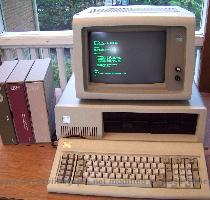HP plans to cut 9,000 jobs, take $1 billion in charges as it deepens automation of data hubs
By Barbara Ortutay, APTuesday, June 1, 2010
Hewlett-Packard to cut 9K jobs in services unit
NEW YORK — Hewlett-Packard Co., the world’s largest information-technology company, plans to lay off about 9,000 employees as it tries to cut costs in its back-office computing centers and deepens its use of software, rather than people, to do some of the work that those hubs require.
The changes to these data centers, which are clusters of computers that run websites and process information for HP’s corporate customers, will be made over about three years, the company said Tuesday. The layoffs amount to about 3 percent of HP’s global work force, which had 304,000 employees as of October, the most recent figure available.
HP said it will take $1 billion in accounting charges, part of which will be used for severance to the laid-off workers. But it also said it plans to replace two-thirds of the jobs elsewhere in the company, by hiring 6,000 people to boost its global sales and delivery staff.
Like most companies that offer such services, HP has data centers around the world. The company has more than 100 centers that it operates for its customers and plans to cut that number roughly in half, but it did not specify the locations.
HP’s drive for better productivity and automation in data centers — and the fact that most of the jobs could be replaced — reflect healthy demand for computing services overall and the rewards waiting for providers that can automate as much as possible.
Over the past decade computer services companies such as IBM Corp. and HP have used geographic location as a way to cut costs. For instance they have been hiring workers in lower-cost areas such as India and Eastern Europe to replace higher-paid labor in the U.S. and Western Europe. Now HP says it is betting that the next phase of cost cutting will come from a sharper focus on how technology is used rather than on geography. Although HP would not specify the automation it expects to deploy, much of the work inside data centers, such as monitoring for trouble and determining which servers should be provisioned for certain tasks, can be handled by sophisticated software rather than humans.
“We think the next five to 10 years is going to be about who can best use technology to automate the delivery of services,” said Ann Livermore, executive vice president for HP Enterprise Business, during a conference call with analysts.
But one analyst called the company’s emphasis on technology in Tuesday’s announcement a “red herring” that diverts attention from the larger issue, which is that HP is cutting expenses as a way to stimulate profit.
“It’s not about automation. It’s about costs and profit,” said analyst Bob Djurdjevic, president of Annex Research.
HP said it will see savings of about $500 million to $700 million a year from the changes, once they are completed. Investors largely shrugged at the news, sending HP shares down 4 cents to $45.97 in afternoon trading Tuesday.
Census figures show that overall, 375,000 people in the U.S. worked in a category called “data processing, hosting and related services” in 2007. Their work is not entirely going away, but likely being repositioned, said Tom Smith, an equity analyst with Standard & Poor’s. In fact, some of the technicians HP is laying off may be the same ones it hires to ramp up its sales force.
“It’s not a Rust Belt kind of industry that keeps shrinking, but an industry with a lot of (research and development) that can regenerate itself,” Smith said. “As companies invest in new things, there is potential for growth that’s not immediately obvious.”
Beyond automation, HP and other companies are reducing the number of data centers they operate by taking advantage of the fact that today’s more powerful servers can handle more work. Also, virtualization software, which allows one server to replicate the function of multiple machines, is letting companies get more out of each server they own.
And the moves give HP another potential benefit: showing its customers how to cut their own information-technology costs, said Charles King, principal analyst at Pund-IT Inc.
Cost savings have been a hallmark of CEO Mark Hurd’s five-year tenure at HP, the world’s biggest maker of PCs and printers and the top information-technology company by revenue. To boost its services business, the company, which is based in Palo Alto, Calif., bought Electronic Data Systems in 2008 and then cut 24,600 jobs as part of that acquisition.
S&P’s Smith called HP’s latest actions the “next step toward efficiency gains” after the initial integration of EDS. EDS ran data centers of its own before it was brought into HP.
In addition to pursuing more profit from business services, HP is also pushing into the mobile market with its planned acquisition of struggling smart phone maker Palm Inc., announced in April.
Tags: New York, North America, Personnel, Products And Services, United States

